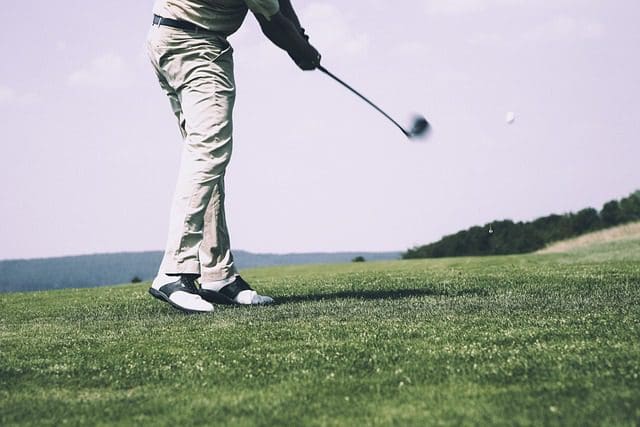Golf is a game that requires a lot of skill and precision. A good golf swing is crucial to success on the course. However, injuries, age, and lack of proper training can all affect your golf swing and overall performance. That’s where physical therapy comes in. In this article, we’ll discuss how physical therapy can help improve your golf swing, prevent injuries, and enhance your overall golf game.
Common Golf Injuries
Golf is a low-impact sport, but it is not without its risks. The repetitive motion of swinging a golf club can cause various injuries, such as lower back pain, shoulder injuries, and a golfer’s elbow. Lower back pain is one of the most common golf injuries. The twisting motion of the golf swing can put a lot of pressure on the lower back, leading to strains and sprains.
Shoulder injuries are also common among golfers, particularly in the lead shoulder. The lead shoulder is closest to the target when addressing the ball. The repeated motion of the golf swing can cause rotator cuff strains, bursitis, and tendinitis.
A golfer’s elbow is another injury that can affect golfers. Golfer’s elbow is a type of tendinitis that affects the inner side of the elbow. It is caused by overuse and can be exacerbated by poor golf swing technique.
Biomechanics of the Golf Swing
The proper technique and mechanics of a good golf swing are crucial to success on the course. The golf swing is a complex movement that involves the entire body. Maintaining proper body alignment and weight transfer throughout the swing is essential.
The golf swing is broken down into four essential components: the backswing, downswing, impact, and follow-through. During the backswing, the golfer turns their body away from the target while keeping their head still. During the downswing, the golfer initiates the swing with their hips and lower body, followed by their upper body and arms. The clubhead strikes the ball at impact, and the golfer follows through with their swing.
Proper body alignment is crucial to a good golf swing. The golfer should align their feet, hips, and shoulders parallel to the target line. Weight transfer is also essential. The golfer should transfer their weight from their back to their front foot during the downswing, creating power and speed in the swing.
Benefits of Physical Therapy for Golfers
Physical therapy can benefit golfers in many ways. It can improve flexibility, strength, and balance, which are all essential for a good golf swing. Physical therapy can also prevent injuries and improve overall golf performance.
Flexibility is essential for a good golf swing. Physical therapy exercises can help improve shoulders, hips, and spine flexibility, allowing for a full range of motion during the swing. Improved flexibility can also help prevent injuries by reducing the risk of strains and sprains.
Strength is also vital for a good golf swing. Physical therapy exercises can help improve strength in the core, legs, and upper body, which are all essential for generating power and speed in the swing. Improved strength can also help prevent injuries by providing support and stability to the joints.
Balance is another important aspect of a good golf swing. Physical therapy exercises can help improve balance and stability, allowing the golfer to maintain proper body alignment throughout the swing. Improved balance can also help prevent falls and other injuries.
Golf Swing Analysis
Golf swing analysis can help identify areas of improvement in your swing. Golf swing analysis involves using technology to analyze your swing, including the angle of your clubhead, body alignment, and weight transfer. Golf swing analysis can help identify biomechanical issues affecting your swing and overall performance.
Physical therapy can work with swing analysis to address biomechanical issues. A physical therapist can evaluate your swing and identify any areas of weakness or imbalance affecting your performance. They can then develop a customized treatment plan to address these issues, including stretching, strengthening, and balance exercises.
Examples of Physical Therapy Exercises for Golfers
Many physical therapy exercises can help improve your golf swing. Here are a few examples:
- Core strengthening exercises: Core strength is essential for generating power and speed in the golf swing. Physical therapy exercises that target the core muscles, such as planks and side bridges, can help improve core strength.
- Shoulder stretches: Shoulder flexibility is essential for a good golf swing. Physical therapy exercises that target the shoulders, such as the doorway stretch and the cross-body stretch, can help improve shoulder flexibility.
- Balance training exercises: Balance is crucial for maintaining proper body alignment throughout the golf swing. Physical therapy exercises that target balance and stability, such as single-leg balance and the wobble board, can help improve balance.
Conclusion
A good golf swing is crucial to success on the course. However, injuries, age, and lack of proper training can all affect your golf swing and overall performance. Physical therapy can help improve your golf swing, prevent injuries, and enhance your overall golf game. Physical therapy can help you achieve a better golf swing and a more enjoyable golf experience by improving flexibility, strength, and balance. If you’re struggling with your golf swing or experiencing pain or discomfort, consider physical therapy as a means of improving your game.
About the Author/s
The New Jersey Digest is a new jersey magazine that has chronicled daily life in the Garden State for over 10 years.
